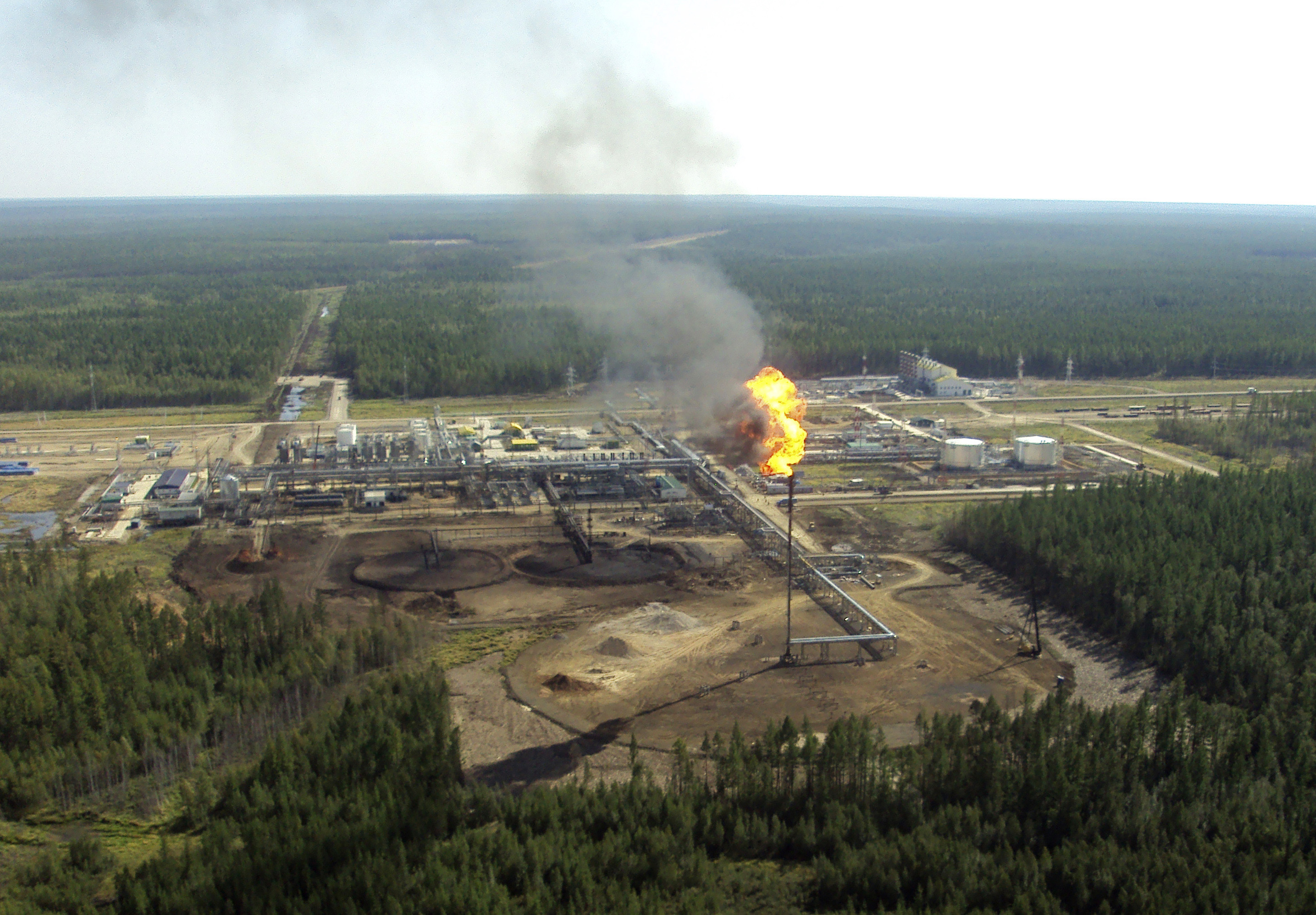Is there a way to stop burning money in the Russian Arctic?
Instead of flaring natural gas, Russian oil producers could use it to create electricity locally.

Viewed from outer space, Western Siberia — illuminated by hundreds of flaming oil well flares — is brighter than Novosibirsk, the biggest city in Siberia, hundreds of miles away.
When crude oil is brought to the surface, small amounts of natural gas (so called associated gas) bubble up alongside oil as well. Gas flaring is a routine activity at oil fields around the world where there is no infrastructure to store or use the associated gas. Flaring is an important safety measure at oil production sites during emergencies than may pose hazards to workers.
Gas flaring produces lots of black smoke and ash that can travel thousands of kilometers and have dreadful effects on public health and the environment even far away from the flaring site. Flaring in the Russian Arctic causes dozens of premature deaths and asthma attacks as well as hundreds of respiratory illness among children every year. What’s more, the smoke and ash produced darken the otherwise reflective sea ice and accelerate its melting. Oil companies in Russia flare an estimated 25 billion cubic meters of gas every year which is twice as much as the annual consumption of the natural gas by the whole country of Belgium. In other words, they burn more than $2.5 billion every year! Clearly, gas flaring in the Russian Arctic goes far beyond normal operational and safety levels and is in fact a colossal resource waste.
All Arctic countries extracting oil in the region (i.e., Russia, Canada and the U.S.) have similar environmental standards requiring the flaring rate to stay low. Yet, Russia remains the largest flaring country in the world. The key difference between the three countries? Economics. Associated gas produced in Canada and Alaska is primarily transported via pipelines and ships or used in petrochemical industry. However, Russian oil fields are located mainly in Siberia far away from roads, gas pipelines and other necessary infrastructure. This makes many solutions already implemented in North America not economically feasible in Russia.
Local electricity generation is one of the most attractive economic ways of using natural gas at small oil fields far from the transportation infrastructure. Those fields and numerous local communities in Northern Siberia cannot be supplied with electricity from the centralized power grid. In these cases, the traditional solution has been to use local diesel-powered plants. These plants use diesel transported from the European part of Russia by trucks, boats or even helicopters. Local governments in those remote communities sometimes spend more than half of their budgets on costly fuel. Instead, numerous small-scale gas turbines running on the associated gas can produce enough electricity to fulfill almost all their needs. Gas turbine power plants have already been commissioned by several oil fields to meet on-site needs.
Building out the infrastructure to handle the associated gas and use it for the electricity generation would increase costs of oil production at existing wells. It will also slow development of the new oil production sites. However, as gas price tends to raise, technology manufacturers and finance institutions have already expressed their interest in participation in projects utilizing associated gas for local power generation in several countries. They will be eager to start a similar program in Russia especially if global institutions, like the World Bank, link numerous industrial partners to find feasible investment solutions with acceptable level of risks.
Gas flaring in the Russian Arctic produces smoke and ash that cause several respiratory diseases among the residents of the region and accelerate climate change. With the necessary investments, gas flaring in Russia would be reduced by a quarter within the next ten years. Usage of associated gas for local power generation will bring clear social benefits to local communities by lowering electricity prices. It will also mitigate environmental and public health risks linked to the utilization of diesel as a fuel. Last but not least, we will reduce waste of valuable resource.
Famous Russian chemist Dmitry Mendeleev once said that burning oil is “akin to firing up a kitchen stove with bank notes.” Perhaps now is good time to stop burning money in the Russian Arctic?
Alexander Zaytsev is a Ph.D. candidate in the Harvard John A. Paulson School of Engineering and Applied Sciences. He is broadly interested in climate and environmental issues.

The views expressed here are the writer’s and are not necessarily endorsed by the Arctic Initiative or Arctic Today, which welcomes a broad range of viewpoints. To submit a piece for consideration, email commentary (at) arctictoday.com.